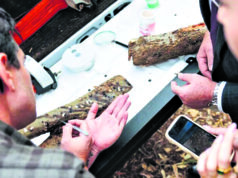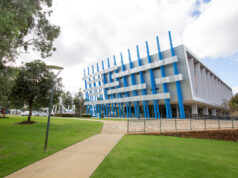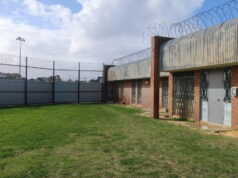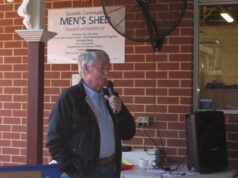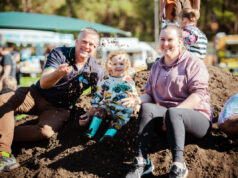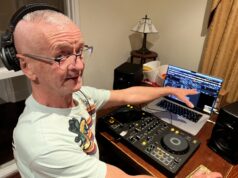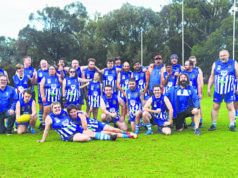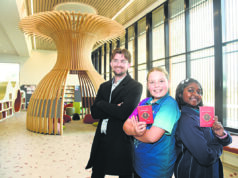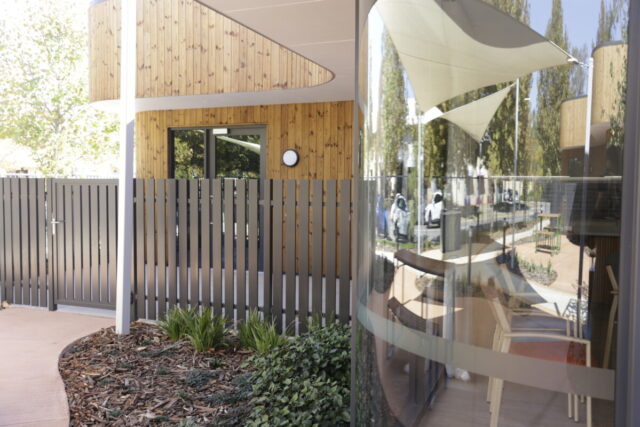
A world-first residential village specifically co-designed by and for people with Huntington’s Disease (HD) is on the precipice of opening in the City of Armadale.
The facility has been purpose-built by Brightwater – a not-for-profit with 30 years’ experience in the Huntington’s space – and co-designed with families affected by Huntington’s Disease, allied health, advocacy and clinical organisations.
It was designed to the knowledge of the disease’s progression, and the model of care needed.
On Tuesday, the first residents will move into their bespoke homes in the Piara Waters-based complex.
The campus will eventually house 21 residents in seven three-bedroom homes, and will replace Belmont’s Kailis House and Carlisle’s Ellison House, the novel idea being that people will be able to age in place, without the often-traumatising relocation to a high-needs facility as the disease progresses.
Huntington’s Disease is an inherited neurological disorder which progressively affects movement, cognition and behaviour.
Most people diagnosed with HD experience random uncontrollable movements called chorea, but the onset, progression, and extent of cognitive and behavioural symptoms vary significantly between people.
Symptoms generally begin to first appear between the ages of 30 and 50.
There is no known cure, and children who have an affected parent have a 50 per cent chance of inheriting the disease themselves.
“We wanted to keep in mind that we were building for generations – those visiting family members are aware that this might be where they call home in 10 to 15 years’ time,” Brightwater Operations Manager Supported Independent Living Anne Mecham said.
“So, it was important for us that this feels warm and welcoming.”
And it really does.
The homes are certified as Specialist Disability Accommodation, built to accommodate the complex range of needs of people with Huntington’s.
Tracks have been installed in each room for bed hoists, and each bedroom has its own ensuite large enough to fit a resident, a trolley and three assisting staff members.
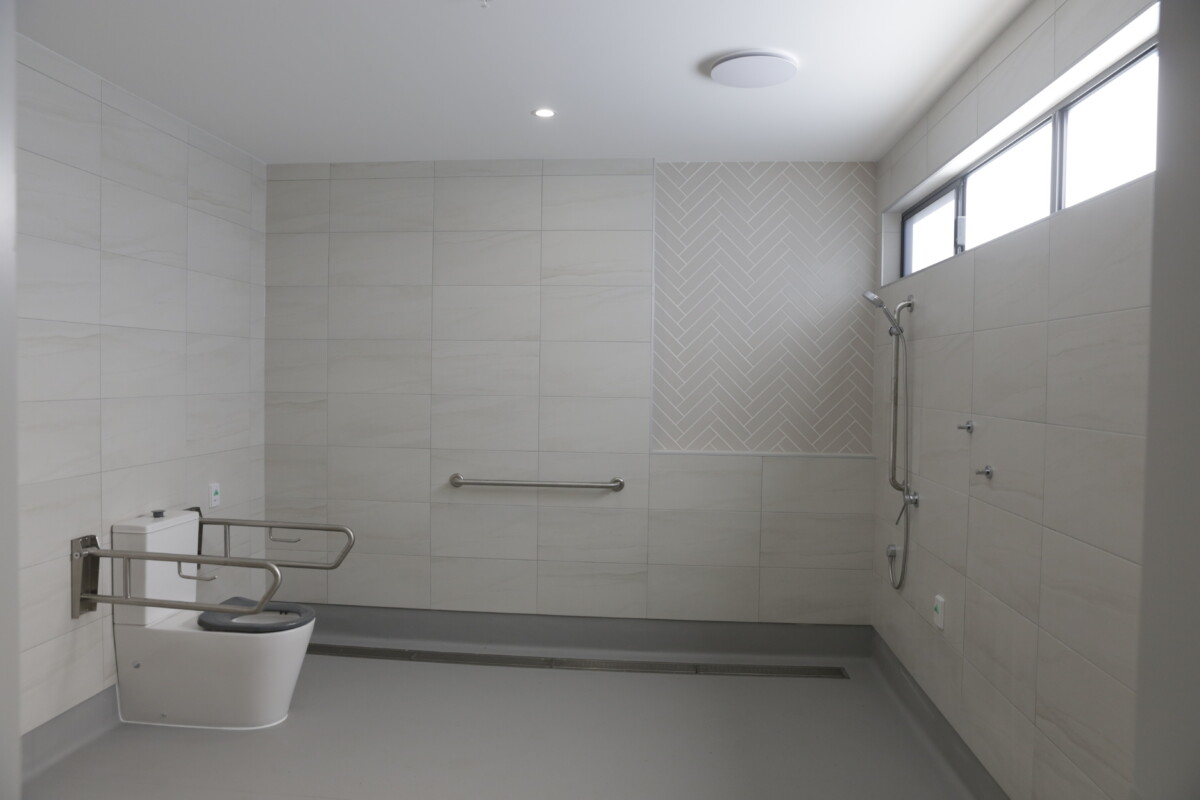
There are adjustable benches in the kitchen to accommodate wheelchairs, a quiet room in each house, and plenty of storage for mobility aids and other equipment.
But there is not a whiff of the clinical atmosphere that often accompanies group homes.
Instead, the architecturally-designed houses are light, airy and very spacious. Curves undulate around the rooms softening the interiors, and the high-spec open-plan kitchen and living space feel as if they would not be out of place in an episode of Grand Designs.
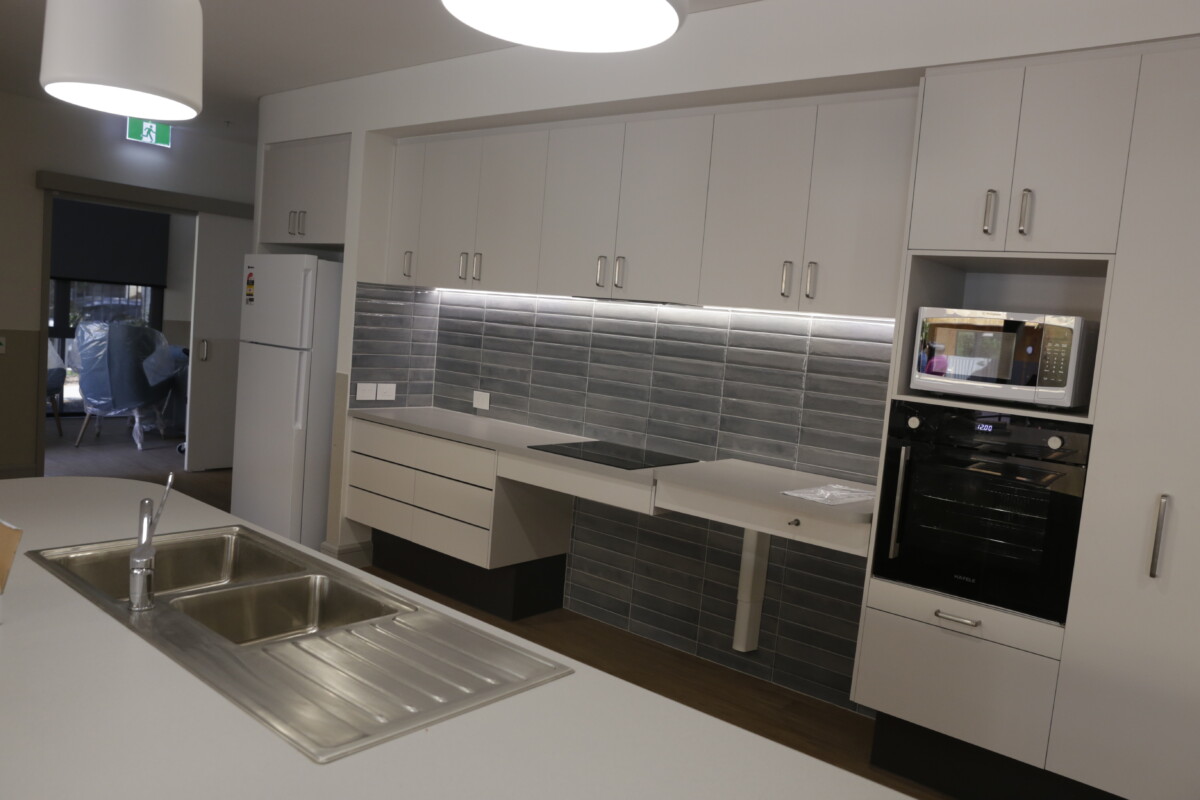
The same care has been paid outside, with patios allowing residents the freedom to live al fresco throughout the year.
The houses face onto a central courtyard.
A gentle path circumambulates the precinct, with border tiles providing a gentle way-finding device.
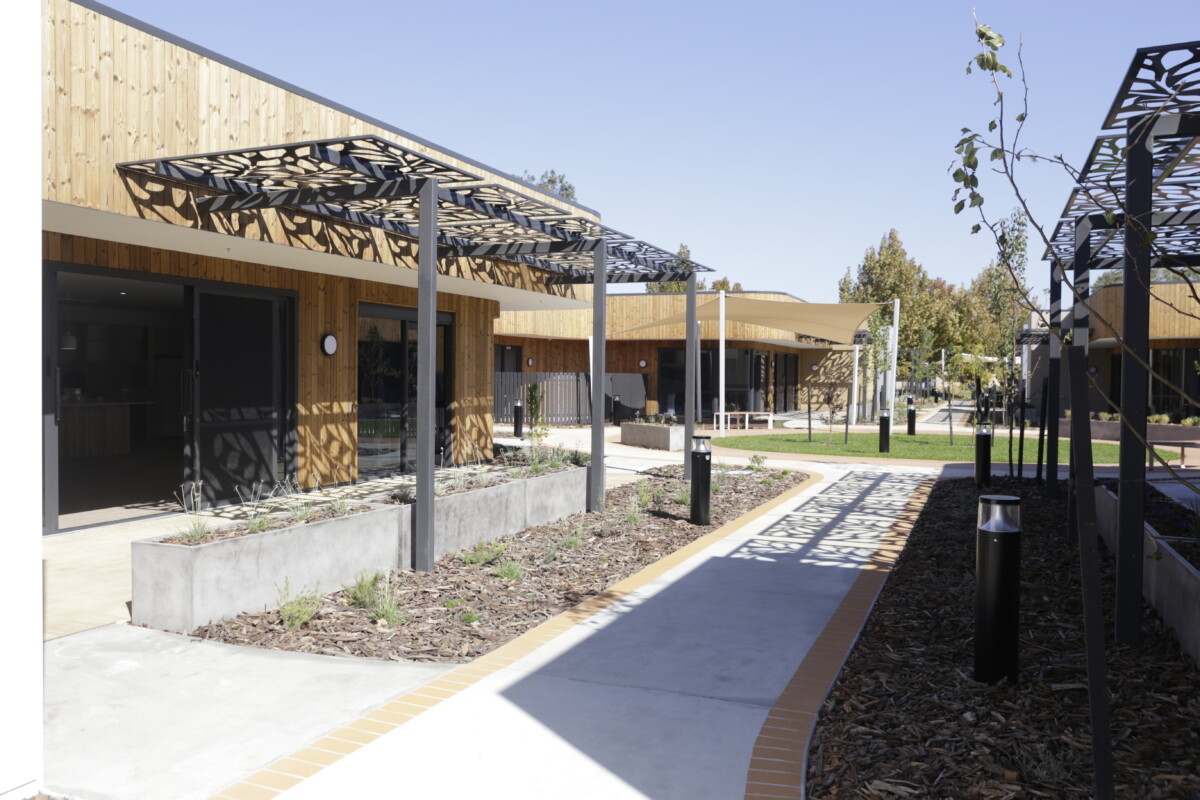
Each house will be distinguished through a unique colour theme and garden aesthetic helping residents to independently find their way home.
A mobility garden lines one edge of the village which functions to both encourage residents to exercise and entice children to play.
A herb and fruit tree garden sits at the rear of the campus for residents and their families to engage with.
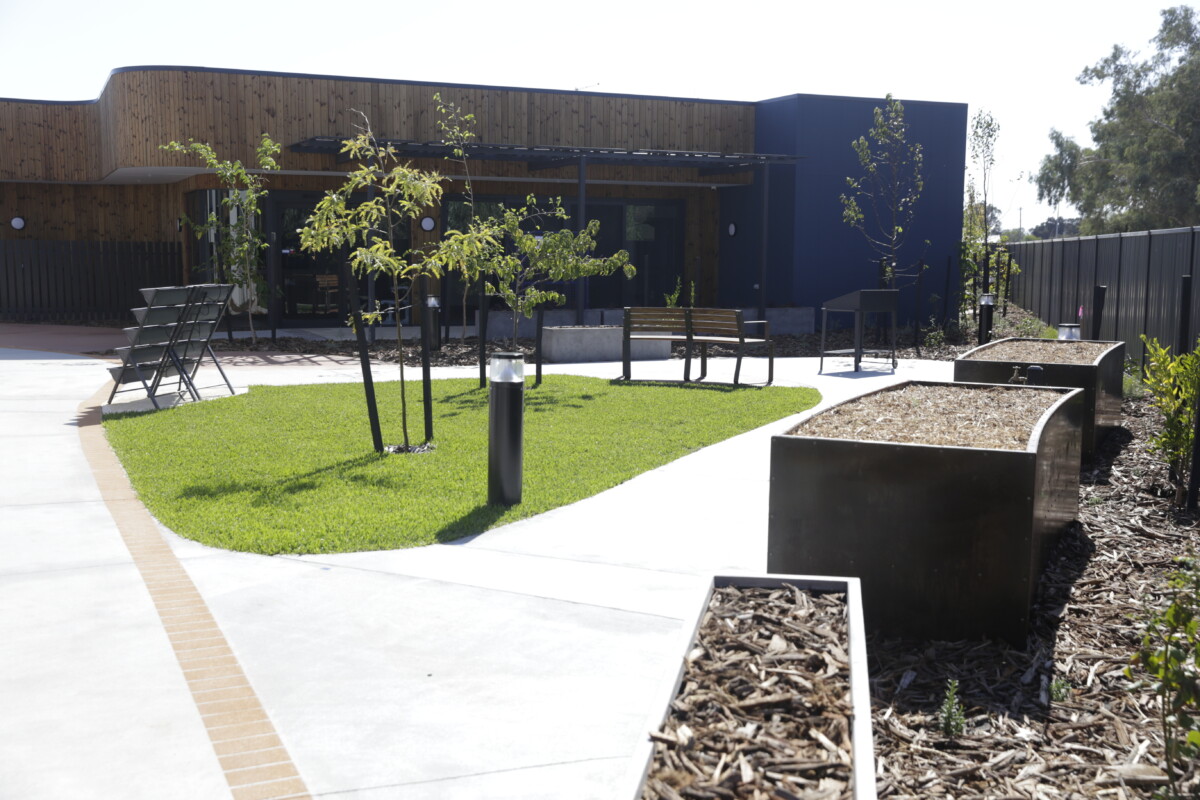
One of the biggest concerns for people with Huntington’s is the risk of social isolation.
House six is slightly larger than the others, and will act a social hub for residents.
A full-time chef will preside over a teppanyaki-style kitchen bench, with a fully-kitted out commercial kitchen to the rear enabling him to ‘maximise economy of scale’ as needed.
But the emphasis will be on choice and a two-way flow of communication between the chef and residents.
As Huntington’s progresses, many people experience difficulty eating and swallowing, so maintaining autonomy over their food, and having the dignity of choice (and the support) to stop eating altogether will be a point of distinction at the Brightwater facility. Brightwater will work closely with Silver Chain to provide palliative care to those who choose to stay through to end of life.
“This is not group housing, this is not institutionalised living,” Ms Mecham said.
“For us this was about how we can make places that are social, encourage eating, are welcoming for families, and can help people sustain their quality of life as the disease progresses.”
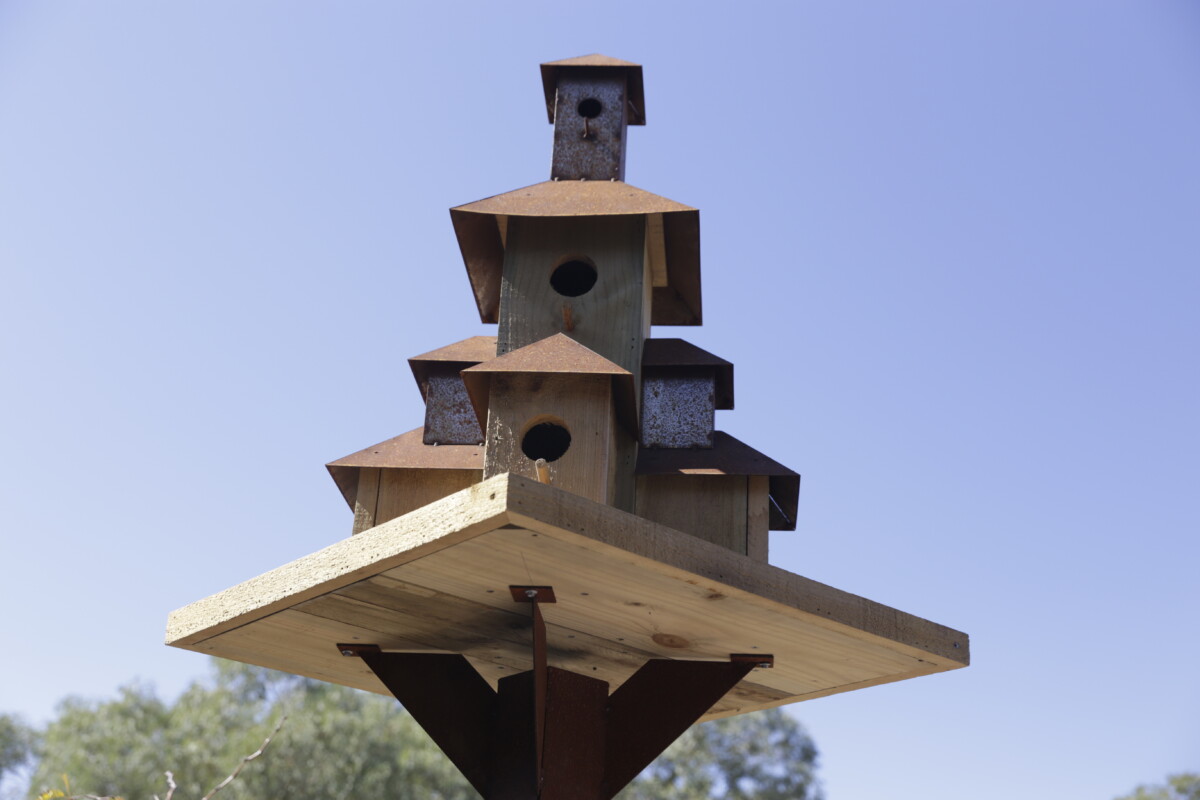
Brightwater is also currently working closely with the City of Armadale to negotiate ramps and traffic calming devices to allow accessibility to nearby cafes, shops and parks, and sustain independence.
“The City of Armadale have been brilliant – really supportive and welcoming. We look forward to working with them further on issues of accessibility,” Ms Mecham said.
“And we’re excited about building relationships with local businesses in the area.”
Staff employed at the facility will be uniquely qualified and experienced to assist people with Huntington’s. But residents will maintain their right to choose their own care providers.
“The houses are strata-titled, so it’s more like a village of units. We believe a person should be able to live in their home and choose who cares for them,” Ms Mecham said.
Sixteen people will move into the Brightwater Piara Waters village by mid-June, leaving five vacancies, which will likely be filled in no time.
This facility, nestled in the growing City of Armadale, is a breath of fresh air, and represents a ground-breaking reimagining of the residential environment for those living with Huntington’s Disease.


